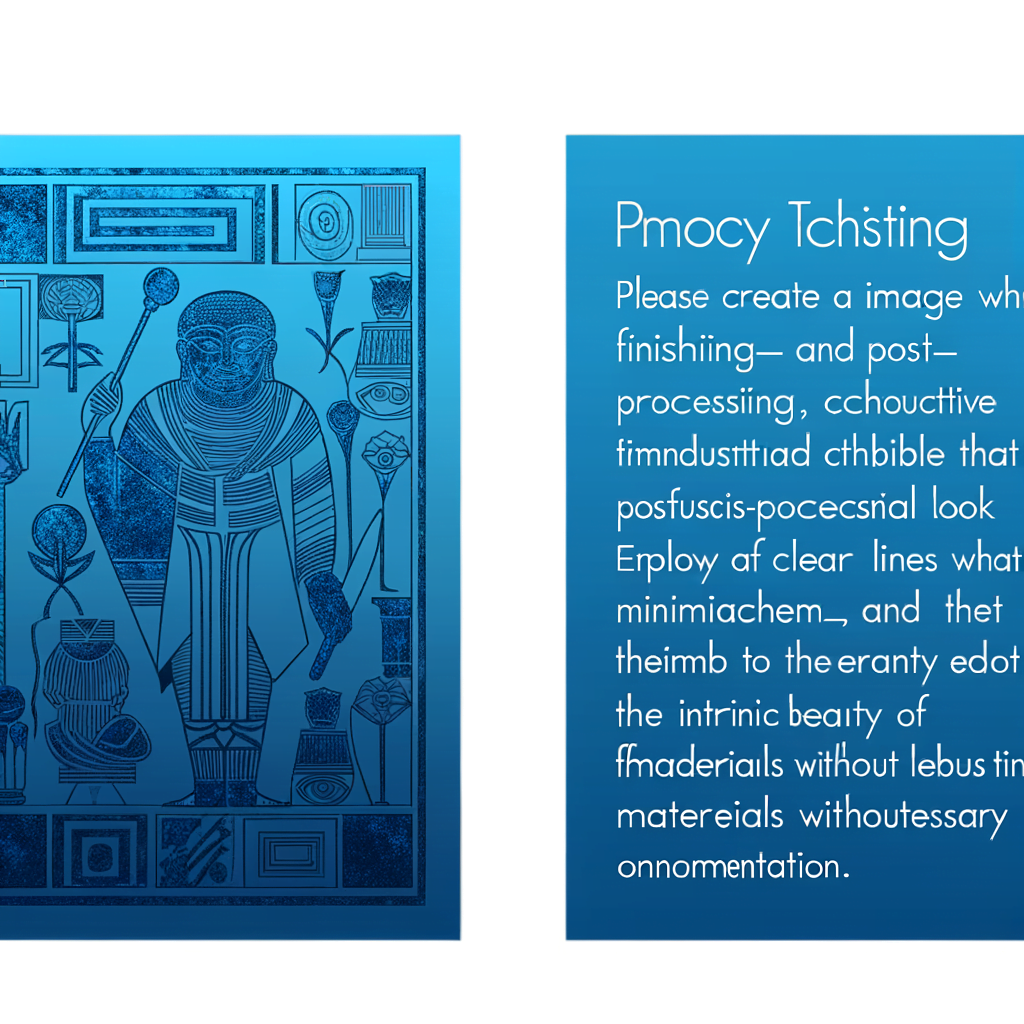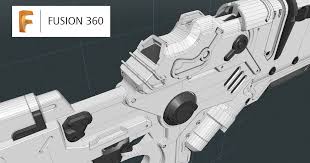Finishings – A Guide to Post-Processing Your 3D Prints for a Professional Look
Sommario
“Perfect Your Print: Mastering the Art of 3D Finishings for a Flawless Creation”
introduzione
Finishings: A Guide to Post-Processing Your 3D Prints for a Professional Look
The world of 3D printing has revolutionized the way we create and manufacture objects, offering unparalleled flexibility and customization. However, the journey from a freshly printed object to a polished, professional-looking product often involves a critical phase known as finishing. This guide delves into the art and science of post-processing 3D prints, providing a comprehensive overview of techniques and best practices to elevate the appearance and functionality of your creations. From support removal and surface smoothing to painting and sealing, we’ll explore the various methods and tools that can transform your 3D printed items into finished pieces with a high-quality, refined aesthetic. Whether you’re a hobbyist looking to improve your craft or a professional seeking to perfect your prototypes, this guide will equip you with the knowledge to achieve outstanding results in your post-processing endeavors.
The Art of Sanding and Smoothing: Perfecting Your 3D Printed Creations
Finishings – A Guide to Post-Processing Your 3D Prints for a Professional Look
The advent of 3D printing technology has revolutionized the way we create and materialize our ideas. From prototyping to final product manufacturing, 3D printing offers unparalleled flexibility and customization. However, the journey from a freshly printed object to a polished, professional-looking piece is not without its challenges. The art of sanding and smoothing is a critical step in post-processing that transforms a 3D printed item from a rough draft to a refined creation.
Once a 3D print is complete, it often bears the telltale signs of its layer-by-layer construction. These layer lines, while a testament to the technology, can detract from the aesthetic and functional quality of the piece. To achieve a smooth surface, one must embark on a meticulous process of sanding. This involves using progressively finer grits of sandpaper to remove the visible layer lines and minor imperfections. Starting with a coarse grit to tackle the prominent lines and imperfections, the artisan gradually transitions to finer grits, which refine the surface to a smooth finish.
Moreover, patience is key during this stage. Rushing through the sanding process can lead to uneven surfaces or even damage to the print. It is essential to sand in a circular motion, applying consistent pressure to ensure uniformity. As one progresses through the grits, the surface should start to take on a more polished appearance, with the layer lines becoming less and less discernible.
In addition to manual sanding, there are chemical methods that can aid in achieving a smooth finish. Acetone vapor smoothing, for instance, is a technique often used with ABS plastic prints. The print is exposed to acetone vapor, which slightly melts the surface, causing the layer lines to blend together. However, this method requires careful handling and proper ventilation due to the toxic nature of the fumes. It is also material-specific and not suitable for all types of 3D printing filaments.
Another popular method for smoothing is the use of filler primers. These substances can be sprayed onto the print to fill in the gaps between layers. Once the primer has dried, additional sanding will reveal a much smoother surface. This technique is particularly useful for prints that will be painted, as it creates an ideal base for the paint to adhere to, resulting in a more professional finish.
For those seeking an even more refined surface, or for prints with intricate details that are difficult to sand by hand, there are professional services that offer high-end post-processing. These services use advanced techniques such as bead blasting, which evenly abrades the surface of the print with fine beads, or tumbling, where the print is placed in a machine with abrasive media that polishes the print as it tumbles.
In conclusion, the process of sanding and smoothing is a transformative one, elevating a 3D printed object from a simple prototype to a professionally finished product. It requires a blend of patience, technique, and sometimes, chemical assistance. Whether through manual labor or advanced post-processing services, the effort invested in this stage is evident in the final product. A well-sanded and smoothed 3D print not only looks more aesthetically pleasing but can also function better, as smooth surfaces reduce friction and wear over time. By mastering the art of sanding and smoothing, creators can ensure their 3D printed creations are not just functional, but also have the polished appearance that stands up to professional scrutiny.
Painting and Coating Techniques for Enhanced 3D Print Aesthetics

Finishings – A Guide to Post-Processing Your 3D Prints for a Professional Look
The advent of 3D printing technology has revolutionized the way we create and prototype objects. However, the journey from a freshly printed object to a finished product with a professional look often involves a critical phase known as post-processing. This phase includes various techniques that enhance the aesthetics and functionality of 3D printed items. Among these techniques, painting and coating are pivotal for achieving a refined appearance. This article delves into the methods and best practices for painting and coating 3D prints, ensuring that your creations stand out with a polished and sophisticated look.
Once your 3D print is complete, the first step towards a professional finish is to inspect and prepare the surface. Any visible layer lines, support marks, or blemishes can detract from the final appearance. Therefore, it is essential to sand the object with progressively finer grits of sandpaper. This process smooths out imperfections and creates a more uniform surface for painting. Additionally, applying a primer can fill in minor gaps and provide a consistent base for the paint to adhere to, resulting in a more even coat.
After the surface preparation, selecting the right type of paint is crucial. Acrylic paints are a popular choice due to their ease of use and quick drying times. They also offer a wide range of colors and finishes, from matte to glossy. For a more durable finish, enamel paints can be used, although they require longer drying times and proper ventilation due to their fumes. When painting, it is advisable to apply multiple thin layers rather than a single thick one. This technique prevents drips and brush marks, ensuring a smooth and professional finish.
In addition to traditional brush painting, spray painting is another effective method for coating 3D prints. It provides a fast and even application, ideal for larger objects or those with intricate details. When spray painting, it is important to maintain a consistent distance and speed to avoid runs and sags. Moreover, using a rotating stand can help you reach all angles of the object without touching the wet paint.
For an extra layer of protection and enhanced aesthetics, clear coats can be applied over the paint. These coatings come in various sheens, allowing you to choose between a glossy, satin, or matte finish. Clear coats not only improve the visual appeal but also add a protective layer against scratches, UV light, and moisture. It is essential to let the paint fully cure before applying a clear coat to prevent any reactions that could mar the surface.
Another advanced technique for coating 3D prints is the use of epoxy resins. Epoxy provides a high-gloss, glass-like finish that can make your print look like a commercially manufactured product. It also adds structural strength to the object. However, working with epoxy requires precision and care, as it can be messy and difficult to remove once cured. It is vital to mix the resin and hardener in the correct proportions and apply it in a dust-free environment to avoid imperfections.
In conclusion, the post-processing of 3D prints through painting and coating is an art that requires patience and attention to detail. By carefully preparing the surface, choosing the appropriate paints, and applying them with skill, you can transform a simple 3D print into a masterpiece with a professional look. Whether you opt for brush painting, spray painting, or epoxy coating, each method offers unique benefits that can enhance the aesthetics of your 3D printed creations. With practice and experimentation, you can master these techniques and achieve finishes that rival those of commercially produced items.
Advanced Finishing Methods: Using Epoxy and Automotive Filler for Flawless 3D Prints
Finishings – A Guide to Post-Processing Your 3D Prints for a Professional Look
The journey from a freshly printed object to a polished, professional-looking product is an essential aspect of 3D printing that often goes overlooked. Advanced finishing methods, such as the use of epoxy and automotive filler, can transform a basic 3D print into a flawless masterpiece. These techniques require patience and a meticulous hand, but the results are well worth the effort, yielding a finish that rivals injection-molded parts.
Epoxy coatings are a popular choice for post-processing 3D prints due to their ability to provide a smooth, high-gloss finish. When applied correctly, epoxy not only enhances the appearance of the print but also adds structural strength and water resistance. To begin, it is crucial to ensure that the print is clean and free of any debris or oils that could interfere with adhesion. Once the surface is prepared, a thin layer of epoxy resin is applied using a brush or spatula. It is important to work in a well-ventilated area and wear protective gear, as epoxy can be hazardous before it cures.
During the application, air bubbles may form, which can be removed by gently applying heat with a heat gun or by using a vacuum chamber to degas the epoxy before application. The epoxy should then be allowed to cure according to the manufacturer’s instructions, which typically range from several hours to a full day. After curing, the surface can be sanded with progressively finer grits of sandpaper to achieve an even smoother finish. If necessary, additional coats of epoxy can be applied, with sanding in between, to build up a thick, even layer that obscures the print layers completely.
In contrast, automotive filler, also known as body filler or Bondo, is a putty-like material that is excellent for filling in imperfections, such as print lines, gaps, or blemishes. The filler is mixed with a hardener and then quickly applied to the print surface before it begins to set. Working swiftly is imperative, as the working time is limited. Once the filler has hardened, it can be sanded down to a smooth finish. This process may need to be repeated multiple times to fill deeper gaps or to refine the surface further.
The sanding process for automotive filler is similar to that of epoxy, starting with a coarse grit to remove excess material and moving to finer grits for a polished look. It is essential to sand in a circular motion and to frequently check the progress to avoid over-sanding, which could damage the print or alter its dimensions. After achieving the desired smoothness, the print can be primed and painted, resulting in a professional-grade finish that conceals the telltale signs of 3D printing.
Both epoxy and automotive filler are advanced finishing methods that require practice to master. However, they offer unparalleled results for those willing to invest the time and effort. By using these techniques, hobbyists and professionals alike can elevate their 3D printed creations, achieving a level of quality that stands out in the burgeoning world of additive manufacturing. With a steady hand and an eye for detail, anyone can transform their 3D prints into objects of artistry and engineering excellence.
Conclusione
In conclusion, post-processing 3D prints is a crucial step for achieving a professional appearance. The guide to finishing 3D prints encompasses various techniques such as sanding, priming, painting, sealing, and more advanced methods like chemical smoothing or electroplating. Each method serves to enhance the visual and tactile quality of the print, remove layer lines, and can also add structural integrity. The choice of finishing technique depends on the material used, the desired aesthetic, and the intended use of the print. Mastery of finishing techniques allows creators to elevate their 3D printed objects from simple prototypes to high-quality, presentation-worthy products.




Lascia un commento